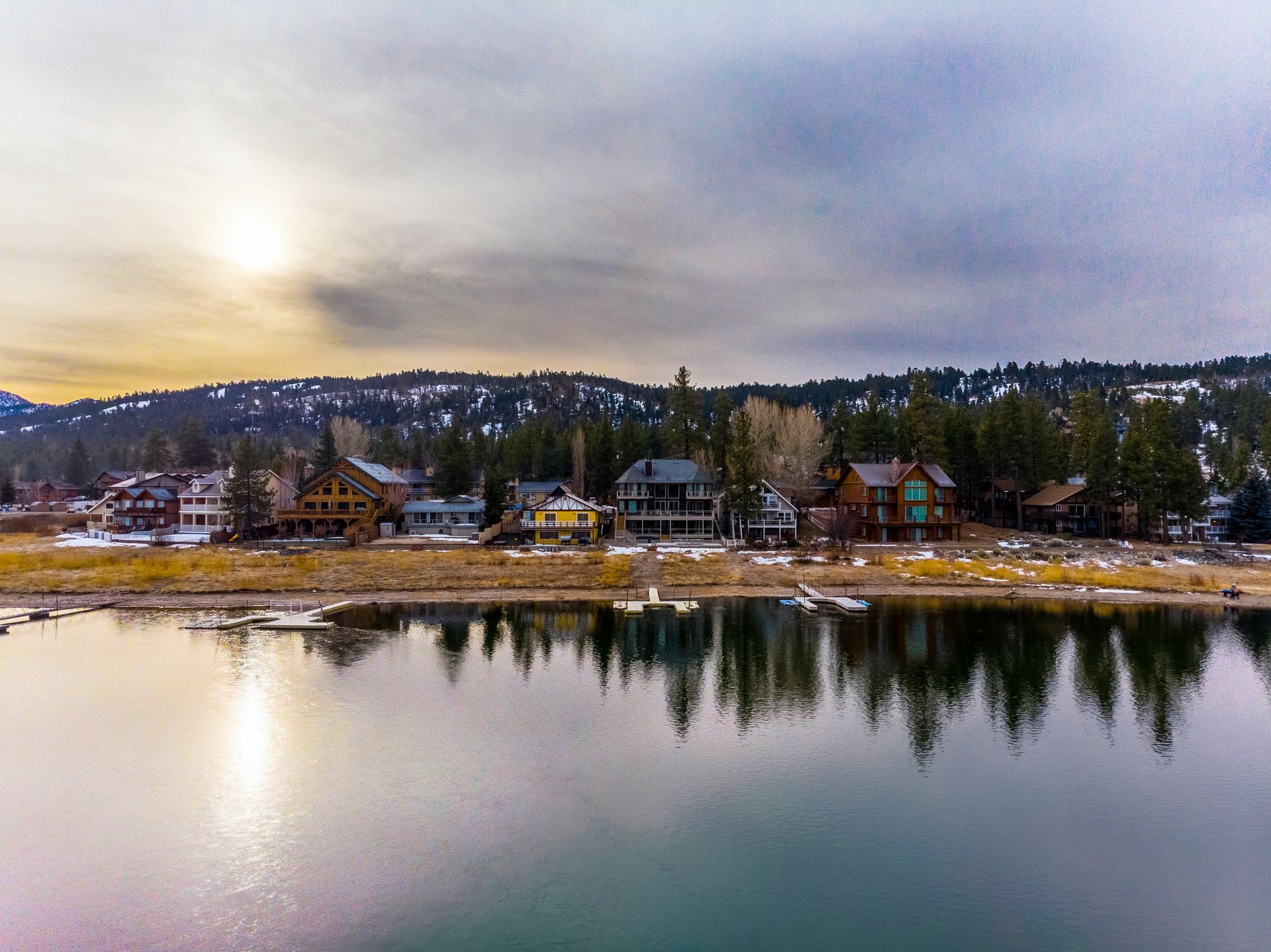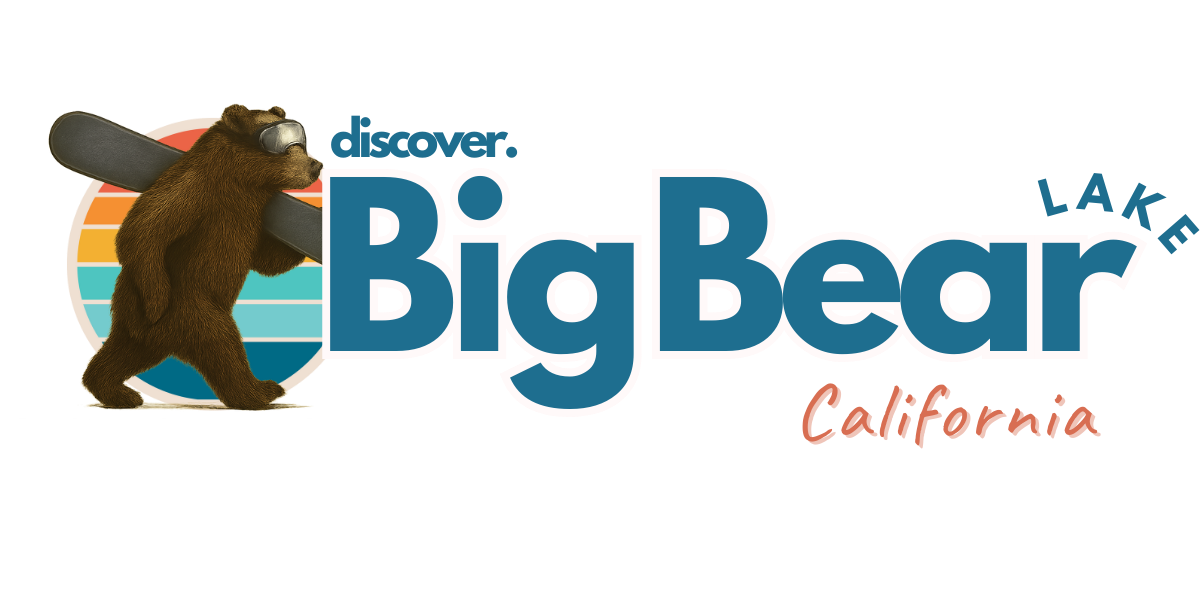Article
Big Bear Lake Facts, History, and Elevation Guide
By Discover Big Bear Lake • October 20, 2025

Nestled high in Southern California’s San Bernardino Mountains, Big Bear Lake is one of the most stunning alpine destinations in the state. From its fascinating Gold Rush history to its shimmering lake waters and snowy winters, Big Bear offers visitors a true four-season mountain experience just a short drive from Los Angeles.
Where Is Big Bear Lake?
Big Bear Lake lies about 100 miles northeast of Los Angeles, surrounded by the San Bernardino National Forest. The drive along Highway 330, 18, or 38 provides sweeping mountain views and fresh pine air.
- Coordinates: 34.2439° N, 116.9114° W
- County: San Bernardino County, California
- Distance from L.A.: ~2 hours (100 miles)
- Nearest towns: Big Bear City, Fawnskin, and Sugarloaf
Big Bear Lake Elevation and Terrain
Big Bear sits at a surface elevation of about 6,752 feet (2,058 meters) above sea level — one of the highest resort areas in Southern California.
Big Bear Lake Elevation by Area
- Big Bear Lake Village – 6,750 ft
Main shopping and dining area in the heart of town.
- Boulder Bay – 6,740 ft
Scenic lakeside park and popular photo spot.
- Fawnskin – 6,765 ft
Quiet north-shore community known for wildlife viewing.
- Snow Summit Base – 7,000 ft
Access point for skiing in winter and hiking in summer.
- Bear Mountain Peak – 8,805 ft
Highest developed area in Big Bear with panoramic views.
- Onyx Summit – 8,443 ft
Highest highway pass on Highway 38, offering scenic overlooks.
Lake Facts – Depth, Size, and Water Details
Big Bear Lake is a man-made freshwater reservoir created in 1884 with the construction of the first dam. The current dam, completed in 1912, expanded the lake to its modern size.
- Surface elevation: 6,752 ft
- Maximum depth: ~72 feet near the dam
- Length: ~7 miles (11 km)
- Width: ~0.5 mile (0.8 km)
- Shoreline: ~22 miles (35 km)
- Water source: Snowmelt & mountain runoff
- Outflow: Bear Creek → Santa Ana River
- Managed by: Big Bear Municipal Water District (BBMWD)
Boating, kayaking, and fishing are popular here from spring through fall. Trout, bass, and catfish thrive in the cold, clean water.
History of Big Bear Lake
Before settlers arrived, the Serrano Native Americans called the valley “Yuhaviat,” meaning “Pine Place.” Gold was discovered in nearby Holcomb Valley in 1860, drawing miners to the region and giving rise to one of Southern California’s first gold rush towns.
By the early 1900s, the original dam transformed the valley into Big Bear Lake. In the 1920s and 1930s, Hollywood filmmakers used the area to shoot westerns, adventure movies, and even early Tarzan films.
Today, the mountain town blends its rustic past with modern adventure tourism — from lakeside cabins to ski resorts and hiking trails.
Communities and Areas Around the Lake
Big Bear is made up of several small mountain neighborhoods, each with its own charm:
- Big Bear Lake Village
The central downtown area with restaurants, boutique shops, and nightlife. Perfect for visitors who want to be close to dining and events. - Boulder Bay
A beautiful lakeside neighborhood known for calm waters, kayaking, and some of the best scenic photo spots in Big Bear. - Fawnskin
Located on the north shore, this quiet community offers a peaceful, local feel and great opportunities for bird-watching and nature walks. - Moonridge / Upper Moonridge
Home to Bear Mountain Ski Resort, the Moonridge area features mountain cabins, golf, and access to hiking trails and the Big Bear Alpine Zoo. - Sugarloaf
A residential neighborhood tucked in the pines, offering easy access to forest trails and a quieter, more affordable mountain experience. - Big Bear City
East of the lake, Big Bear City has the local airport, forest access roads, and plenty of rustic cabins for a true mountain escape.
Climate and Seasons
Big Bear Lake enjoys four distinct seasons, which is rare for Southern California:
- Winter: 60–100 inches of snow, ideal for skiing and snowboarding
- Spring: Melting snow fills the lake, wildflowers bloom across the meadows
- Summer: Warm, sunny days (70–85°F), perfect for boating and hiking
- Fall: Crisp days, golden aspens, and fewer crowds
Even in summer, nights can dip into the 40s°F because of the elevation, so layers are always smart to pack.
Quick Facts About Big Bear Lake
Fact
- Founded: 1884 (dam built 1912)
- Elevation: 6,752 ft
- Lake depth: ~72 ft
- Shoreline: ~22 miles
- Population: ~5,500 residents
- County: San Bernardino
- Annual snowfall: 60–100 inches
- Average summer high: 80°F
- Average winter low: 20°F
Why Visitors Love Big Bear
From skiing and snowboarding in winter to boating, hiking, and mountain biking in summer, Big Bear offers something for everyone. Its combination of alpine charm, scenic beauty, and easy accessibility makes it a top California mountain destination.

